Metamask: How to get networkVersion with ethers
Here is an article about how to get “Network version” with ether:
Network version in Ethhers.js: A step-by-step instructions
When creating a decentralized application (DAPP) using the ether.js library, your network version is one of the essential information you need. In this article we will go through the process of obtaining the “Network version” with Ethers.js.
What is ether and network version?
Ethers.js is a popular JavaScript library for the development of Ethereum-based applications, including dapps. It offers an easy way to interact with the Ethereum blockchain. The network version refers to the current status of the network, including the block number, the gas limit and other relevant information.
Step 1: Importing Ethers.js
First import the library of Ethers.js into your JavaScript file:
`JavaScript
Import {Ethers} from ‘Ether’;
`
Step 2: Get an instance of the Ethereum provider
Create an instance of the Ethereum provider using 'ether.providers.web3:Const web3 = new ethers.providers.web3 (); `
Step 3: get the network version
To get the network version, you can use the following code:
`JavaScript
web3.eth.net.Version
`
This returns a string that specifies the current network version. For example:
`
0x4e1b5d5a4c34 …
`
Step 4: Check for network errors
The “network version” can make a mistake if there is a problem with the Ethereum provider or the network connection. You can search for mistakes via the following code:
`JavaScript
web3.eth.net.status ();
if (web3.eth.net.status ()! == ‘connected’) {
console.error (‘network error:’, web3.eth.net.status ());
}
`
Step 5: Get the block number
You can also get the current block number to check whether it is a valid network version:
`JavaScript
Const Blocknumber = Warte Ethers.Getlatestblocknumber ();
console.log (block number);
`
put together everything
Here is an example -Code -Snippet that shows how you use Ethers.js to maintain the network version and look for errors:
`JavaScript
Import {Ethers} from ‘Ether’;
Asynchrical function main () {
attempt {
Const web3 = new ethers.providers.web3 ();
// get the network version
Const Network version = waiting web3.eth.net.
Console.log (Network version: $ {network version});
// check for network errors
if (web3.eth.net.status ()! == ‘connected’) {
console.error (‘network error:’, web3.eth.net.status ());
}
} Catch (error) {
console.error (error);
}
}
primarily();
`
In this example we create an instance of the web3 provider and create the network version with `ethers.providers.web3 (). Eth.net. Version. We then check whether the network is connected and record all of the errors that occur.
If you take these steps, you can simply get the network version of your DAPP with Ethher.js. Remember to treat mistakes and exceptions in the production code properly.


